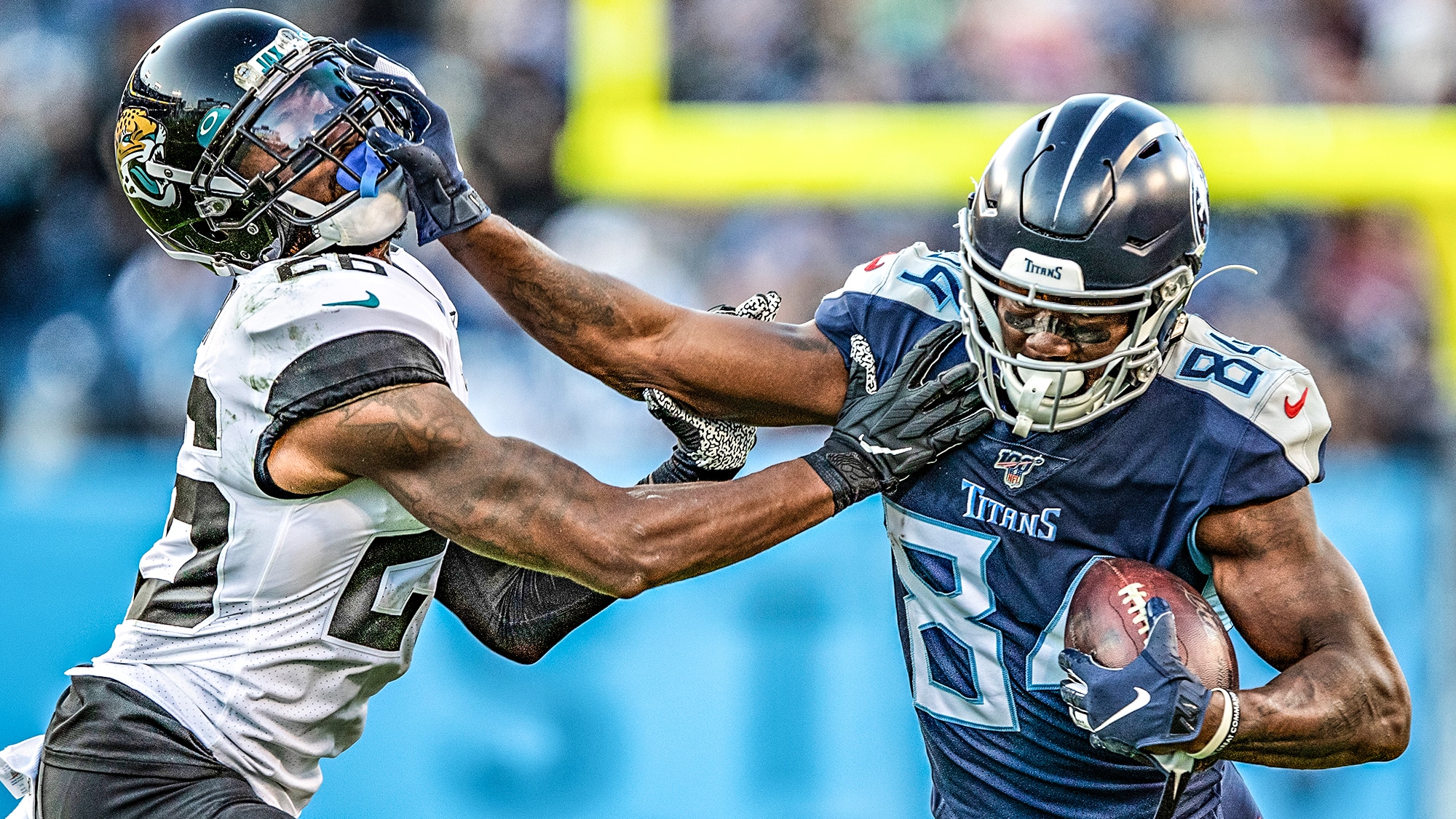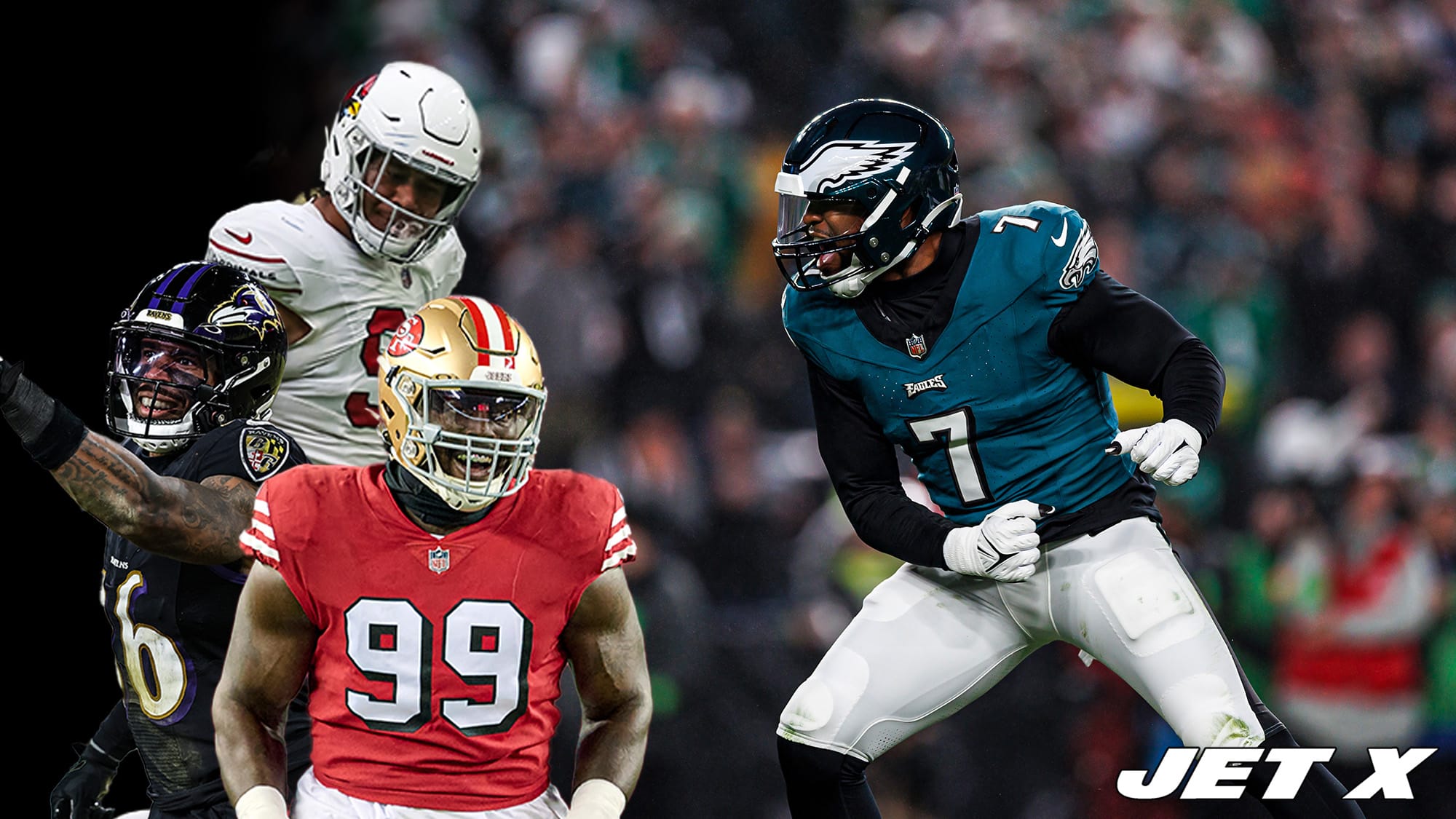Here are five key statistical areas where the New York Jets have a great chance of improving over their massive struggles in 2020.
37.2 net yards per punt (30th)
The Jets’ punting unit struggled in 2020, ranking 30th in net yards per punt (37.2) and DVOA (defense-adjusted value over average).
Both rookie punter Braden Mann and his coverage team played a part in the poor output. Mann ranked 29th out of 31 qualifiers in average punt distance (43.9 yards) and placed as PFF’s 20th-ranked punter (64.4 overall grade). The coverage team was brutal, allowing the sixth-most yards per punt return (11.7) even with Mann making three amazing touchdown-saving tackles.
There are reasons to be hopeful that the Jets are going to turn this weakness into a strength in 2021. Number one, Mann showed gradual improvement throughout his rookie season. From Weeks 8-17, Mann ranked fifth among qualified punters in average hang time per punt (4.46 seconds) and graded as the 11th-best punter at PFF (67.1 overall grade).
Secondly, the coverage team is poised to improve after the Jets added a bevy of speed and special teams talent to the backend of their roster.
Former Saints coverage star Justin Hardee is the main attraction. Hardee earned a 90.4 special teams grade at PFF in 2020, sixth-best out of 193 qualifiers. For his career, Hardee has a 6.6-to-1 ratio of tackles to missed tackles on special teams, more than double the 2020 NFL average (2.9-to-1).
Joe Douglas also added a good deal of athletic prospects in the draft who could make a positive impact in punt coverage. Michael Carter II (4.36 forty), Brandin Echols (4.36), Isaiah Dunn (4.38), and Jason Pinnock (4.49 at 204 pounds) all bring plenty of athletic ability to the table. Obviously, there’s no guarantee that athleticism translates to good special teams play (there’s a lot more to it than raw speed), but there is no question that the unit’s ceiling has been raised by the influx of great athletes.
With continued progress from Mann, the addition of a special teams star in Hardee, and some improvement to the athleticism of the roster’s backend, the Jets should fare a lot better in the punting game next season.
94 pressures from edge rushers (29th)
Quarterbacks have enjoyed throwing from cushy pockets against the Jets for years.
Those days are no more.
The addition of Carl Lawson changes everything for a Jets franchise that has not had an intimidating edge rusher since John Abraham. Lawson had 64 pressures in 2020, fourth-most among edge rushers. The Jets’ top-two edge threats – Tarell Basham and Jordan Jenkins – combined for 63 pressures.
Don’t forget about the impact that Vinny Curry can have over a small dosage of opportunities. Curry created pressures on 14.0% of his pass-rush snaps in 2020, ranking at the 94th percentile among qualified edge rushers.
386 receiving yards from RBs (30th)
The Jets got very little out of their running backs in the passing game last year. No Jets running back hit 100 receiving yards (Ty Johnson led the way with 99), and the group scored only one touchdown through the air (courtesy of Johnson against the Rams in Week 15).
Adam Gase did not make the position a focal point in the passing game, as the Jets ranked 27th with 73 targets to running backs. However, he could hardly be blamed for doing so, as the group was not efficient when given chances. New York’s running backs averaged 5.3 yards per target, ranking 24th.
These numbers are likely to be turned around in 2021. Firstly, Mike LaFleur comes from a 49ers offense that heavily utilized its backs in the passing game, so the position should be prioritized in the aerial attack more than it was with Gase at the helm. San Francisco’s backfield (including fullback Kyle Juszczyk) ranked fifth in receiving yards (828) and targets (129) in 2020. The unit ranked eighth in yards per target (6.5).
In addition, the Jets have improved the pass-catching talent of their backfield.
Tevin Coleman is a top-notch receiving back. For his career, Coleman has averaged 7.2 yards per target and has picked up a first down or a touchdown on 32.5% of his targets – those are elite numbers for a running back (2020 positional averages: 5.7 and 24.9%).
Fourth-round pick Michael Carter was a great receiving option at North Carolina. In 2020, he averaged 8.9 yards per target and posted a 43.3% conversion rate, averaging 24.3 receiving yards per game and catching two touchdowns over 11 games.
54.8 run blocking grade from WRs and TEs (25th)
Skill position blocking has not been a strength for the Jets in a while. Their struggles to generate an exciting outside run game or screen game have largely been due to their lack of quality blockers at wide receiver at tight end. In 2020, the Jets’ wide receivers and tight ends combined for a run blocking grade of 54.8 at PFF, ranking 25th in the NFL.
With LaFleur likely to install an offense that will be heavily reliant on outside runs and manufactured underneath touches in the passing game, the blocking quality of the Jets’ skill position players is going to be crucial.
The team put a clear emphasis on this skill with their additions in free agency:
- Corey Davis: 67.5 run blocking grade in 2020 (77th percentile among WR)
- Keelan Cole: 64.8 run blocking grade in 2020 (74th percentile among WR)
- Tyler Kroft: 63.8 run blocking grade in 2020 (68th percentile among TE)
Finally, the Jets’ playmakers will have some holes to work with on the edge.
8.1 yards per target allowed by LBs (26th)
The Jets allowed the most receiving yards to tight ends (1,105) and the eighth-most receiving yards to running backs (673). Their struggles with covering non-wide receivers were mostly due to the linebacker position.
New York’s linebackers combined to allow 1,025 passing yards over 126 targets, an average of 8.1 yards per target that ranked seventh-worst among the league’s linebacker groups. Opponents had a 108.5 passer rating when targeting the Jets’ linebackers.
While there are question marks at the linebacker spots beside him, C.J. Mosley will represent a major boost for the Jets in this area. Since 2016, Mosley has a PFF coverage grade of 73.1. That mark would have placed Mosley at the 87th percentile among qualified linebackers in 2020. The Jets’ linebackers in 2020 combined for a 50.1 coverage grade (25th among the 32 LB units).
It wouldn’t be fair to expect too much out of rookies Jamien Sherwood and Hamsah Nasirildeen (in addition to the volatile Jarrad Davis and the wild-card Blake Cashman), but Robert Saleh and Jeff Ulbrich have excelled at developing linebackers, especially in the passing game.
Saleh’s background lies largely in coaching linebackers (spending time as a linebackers coach with the Texans and Jaguars), and he oversaw tremendous linebacker production during his tenure as the 49ers’ defensive coordinator. In 2020, San Francisco’s linebackers posted the best coverage grade of any LB unit in the NFL (75.5).
Ulbrich earned a similar reputation as the Falcons’ linebackers coach from 2015-20. This past season, Atlanta’s linebackers had the sixth-best coverage grade of any LB unit (65.9).
What makes the development of Saleh and Ulbrich’s linebackers most impressive is that neither man was working with elite-level talent. There was not a single linebacker on either coach’s 2020 roster that was a first-round pick. Saleh helped grow third-round pick Fred Warner into a superstar, while fifth-round pick Dre Greenlaw has become a solid starter. Down south, Ulbrich led second-round pick Deion Jones to stardom and developed sixth-round Foyesade Oluokun into a versatile starter (in a role similar to what the Jets are projecting for their rookies).
A healthy Mosley alone will substantially improve the Jets’ coverage at linebacker, but if Saleh and Ulbrich can continue their trend of developing athletic late-round linebackers into quality starters, the possibility exists that the Jets’ linebacker unit establishes itself as one of the better pass-covering groups in the league.













Great piece, Michael. We’re gonna barely recognize this Jets team in 2021–and that’s a very good thing!
Thanks! I really like how they fixed very specific weaknesses. Not only did they address positions of need, but they found guys who are skilled in the specific areas where they struggled last year, and who are skilled in specific areas that are important for this particular offensive/defense scheme.
One could argue (as many have, myself included) that they didn’t do enough to address the IOL and CB situations, given the fact all the FA IOL signings were JAGs at best, there were no CB signings at all, and aside from AVT no premium draft picks devoted to either area. But with so many areas of need, I guess they had to spread their shots out. Very curious to see how the OL sorts itself out in camp.
Something else I’ve been thinking about: it felt to me last year like a lot of Darnold’s INTs took place when he wasn’t under a particularly intense amount of pressure–the red zone picks in particular. Also, while Gore and Perine were mediocre, Ty Johnson and Josh Adams both were able to achieve healthy YPC when they got a chance to carry the ball. So I wonder if, the poor job done by the IOL notwithstanding, an evaluation was made that the outcomes were less dependent on blocking and more on scheme/personnel usage? And maybe taking things a step further, that with better coaching and schemes, the blocking itself could improve? (just spitballing here…)
Darnold had the worst clean-pocket passer rating in the NFL (81.7) and the 2nd-highest clean pocket INT% (2.9% with 7 INTs on 238 attempts), so his issues definitely go way beyond simply the offensive line. And I definitely think that Johnson/Adams (particularly Johnson) are good scheme fits and that CMG/Fant should improve in a wide-zone scheme